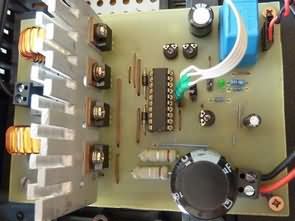DIGITAL CLASS D AMPLIFIER CIRCUIT TAS5706A PCM1850A ATMEGA128
TAS5706A Class D Amplifier was itself the signal processor. From this parts depend all the other elements. Has an impact on the type of power supply, the control method of the type converter. That… Electronics Projects, Digital Class D Amplifier Circuit TAS5706A PCM1850A ATmega128 “audio amplifier circuits, avr project, class d amplifier circuit, ic amplifier, microcontroller projects, “ TAS5706A […]
DIGITAL CLASS D AMPLIFIER CIRCUIT TAS5706A PCM1850A ATMEGA128 Read More »

